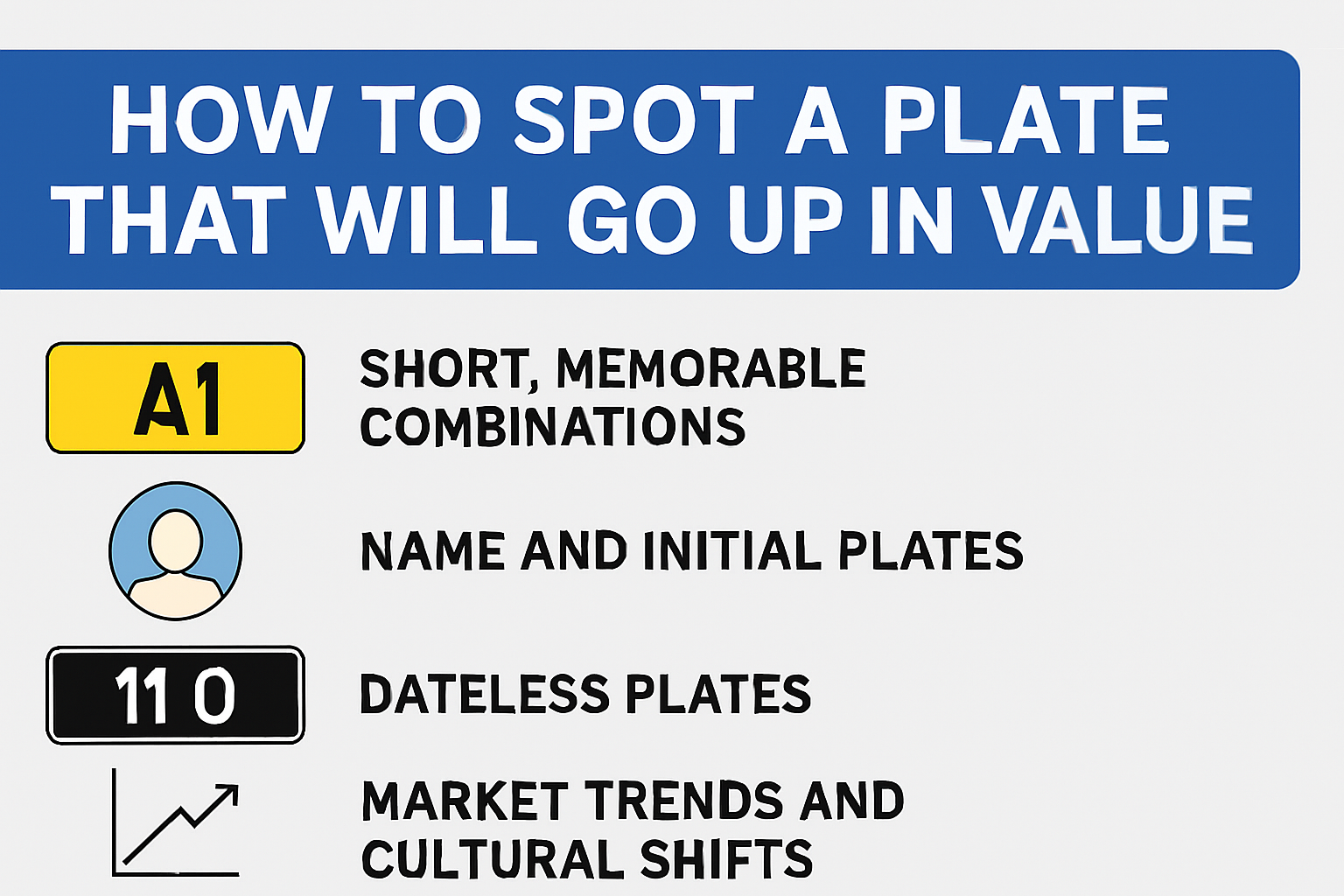
Investing in a personalised number plate isn’t just about style—it can be a savvy financial move. But how do you know which plates will appreciate over time? Whether you’re a seasoned collector or a first-time buyer, understanding the key indicators of value can help you make smarter decisions. This guide breaks down the essential factors that influence plate value and how to spot a future winner.
1. Understand What Drives Value
Before diving into specifics, it’s important to grasp the core elements that determine a plate’s worth:
- Rarity: The fewer characters or the more unique the combination, the higher the value.
- Relevance: Plates that resemble names, initials, or popular words tend to attract more buyers.
- Age and Format: Older plates, especially dateless ones, often carry prestige and historical value.
- Market Trends: Like any asset, number plates are influenced by cultural shifts, celebrity interest, and online trends.
- Condition and Documentation: A well-maintained plate with proper DVLA documentation (V750 or V778) is more desirable.
2. Look for Short, Memorable Combinations
Short plates are consistently among the most valuable. Why?
- Visual Impact: A plate like “A1” or “JON 1” is instantly recognisable.
- Prestige: Fewer characters often imply exclusivity.
- Ease of Recall: Memorable plates are easier to market and resell.
For example, the plate “25 O” sold for over £500,000 due to its association with Ferrari’s iconic 250 series.
3. Name and Initial Plates Are Always in Demand
Plates that resemble common names or initials are perennially popular:
- Examples: “MI1 KES” for Mike, “SUE 1” for Sue, or “JON 77” for Jonathan.
- Business Appeal: Entrepreneurs often buy plates that match their brand or personal identity.
- Gift Potential: Plates make unique, personalised gifts, increasing their resale appeal.
Tip: Check how closely the plate resembles the actual name. The fewer substitutions (like numbers for letters), the better.
4. Dateless Plates Hold Historical and Aesthetic Value
Dateless plates—those issued before 1963—don’t show the age of the vehicle, making them highly sought after:
- Examples: “O 11” or “11 O” are classic dateless registrations with strong investment potential.
- Collector Interest: These plates often appeal to vintage car owners and collectors.
- Limited Supply: Since they’re no longer issued, their rarity increases over time.
5. Monitor Market Trends and Cultural Shifts
Just like fashion or tech, number plate popularity can shift:
- Internet Culture: Plates that reflect trending slang, memes, or hashtags may spike in value.
- Celebrity Influence: A plate linked to a famous figure or event can suddenly become desirable.
- Regional Trends: Local slang or pride (e.g., “YRK 1” for Yorkshire) can drive demand.
Stay ahead by following auction results, social media, and automotive forums.
6. Consider Business and Industry Relevance
Plates that align with industries or professions can be lucrative:
- Examples: “LAW 1” for legal professionals, “MED 1” for doctors, or “RIG 7278” for oil rig workers.
- Branding Value: Businesses may pay a premium for plates that reinforce their identity.
- Resale Potential: These plates often have a broader market appeal.
7. Use Valuation Tools and Expert Insights
Several online tools and services can help estimate a plate’s value. One reliable option is the Regplates.comvaluation tool, which uses historical sales and demand data to provide realistic estimates.
These tools consider factors like age, rarity, format, and demand to give a clearer picture of a plate’s investment potential.
8. Check Documentation and Ownership History
A plate’s paperwork can affect its value:
- V750 Certificate of Entitlement: For plates not yet assigned to a vehicle.
- V778 Retention Document: For plates removed from a vehicle.
- Ownership History: Plates with celebrity or historical provenance may fetch higher prices.
Ensure all documentation is up to date and transferable.
9. Think Long-Term: What Will Still Be Desirable in 10 Years?
When investing, consider longevity:
- Timeless Appeal: Names, initials, and classic words tend to retain value.
- Avoid Fads: Plates tied to fleeting trends may lose relevance.
- Quality Over Quantity: One high-value plate can outperform several lower-tier ones.
Ask yourself: “Would this plate still be desirable in a decade?”
10. Red Flags to Avoid
Not all plates are good investments. Watch out for:
- Overly Complex Substitutions: These might be clever but can be harder to read.
- Poor Initials: Low popularity initials may be harder to find a buyer for in the future.
- Unclear Meaning: If the plate’s message isn’t obvious, it may struggle to find buyers.
Spotting a plate that will go up in value is part art, part science. By focusing on rarity, relevance, and market trends—and using expert tools—you can make informed choices that pay off in the long run.
At Regplates.com, we’re passionate about helping customers find plates that not only reflect their identity but also offer long-term value. Whether you’re buying for personal use, gifting, or investing, our team is here to guide you every step of the way.

Jon Cherry is a Director of leading personalised number plate dealer Regplates.com. Jon has over 25 years industry experience handling some of the most expensive plates ever sold with many high profile and celebrity clients. Active since 1991 in the number plate industry, Jon is currently Chairman of the Cherished Numbers Guild, a trade body representing number plate dealers in the UK. Jon has written many articles on the industry and insight into the future of numberplates and the market as a whole.




